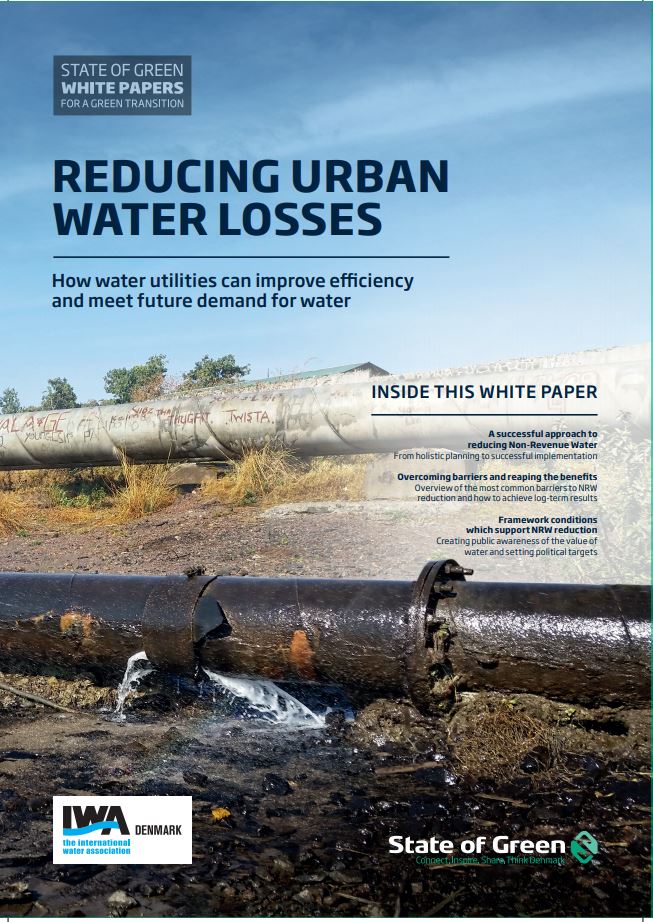Download our publication on reducing urban water loss today
This article is part of our publication ‘Reducing urban water loss’.
Download nowPerspective
Non-revenue water


State-of-the-art technology and best available solutions are continuously developed based on product innovation, smarter ways of working and better integration of different solutions. New innovations can contribute to lowering NRW and improving the efficiency of the water distribution.
In Denmark, great emphasis is placed on research and innovation programmes to ensure continuous improvements in NRW projects. Companies working in the water sector, water utilities and research institutes are encouraged to work together on developing new and innovative technologies and solutions for both the Danish and the international market.
Experience shows that innovation is best achieved when the competencies of different stakeholders are exploited in a close interplay between companies with complementary products or services as well as researchers and water utilities. Bringing different stakeholders together in binding strategic partnerships has therefore boosted innovation in the Danish water sector. Following a request from a unanimous Danish parliament, the first Eco-Innovation initiative was launched by the government in 2006. The primary aim of the programme is to promote new and efficient environmental solutions, strengthen green exports and create more jobs. The secondary purpose is also to boost and strengthen cooperation between companies, research institutions and partners in the EU within the field of environmental technology. The programme and the associated funding scheme are run by the Ministry of Environment.

This article is part of our publication ‘Reducing urban water loss’.
Download nowDanish water utilities actively participate in innovation projects as a way to improve their performance and become more efficient in delivering fresh drinking water to their customer. As a result, they are generally very open to cooperating with other stakeholders in the water sector on developing new and improving existing practices and technologies. This could for instance include advanced use of software, data collection and communication technology combined with smart meters to collect important information about consumption in order to optimise their water supply to the network and save energy. One example of this type of technological development is the case of Danish water utilities who are implementing smart water meters and noise logging tools in order to collect more reliable data from the distribution system and thereby manage their NRW even better. The data from the smart meters, which is collected both at the customer end and in strategic locations in the distribution system, provide water utilities with more accurate daily NRW levels in each DMA; enabling them to optimise their NRW activities on a daily basis. The use of Artificial Intelligence (AI) and Big Data technology has started a revolution in data collection and analysis that makes it possible to predict pipe leaks or bursts and localise them instantly, meaning that leaks will be repaired within less than 24 hours.
One of the most important barriers to starting up a new NRW programme is often securing funding for the programme in its initial phase until the expected return on investment is realised. Many water utilities around the world are not able to overcome the initial investment, even though the business case shows a payback time of just 2-3 years. A proven solution can be to arrange a public-private partnership (PPP) between the utility and private sector companies. The PPP can be set up in different ways, e.g. between the water utility and the contractor on behalf of a group of suppliers to the programme, or by using a Performance Based Contract (PBC or ESCO) where the contractor is paid based on the savings and increased income the project has generated for the water utility. Danish companies are often open to such arrangements.
publications
Non-revenue water
+4
publications
Climate change adaptation
+11